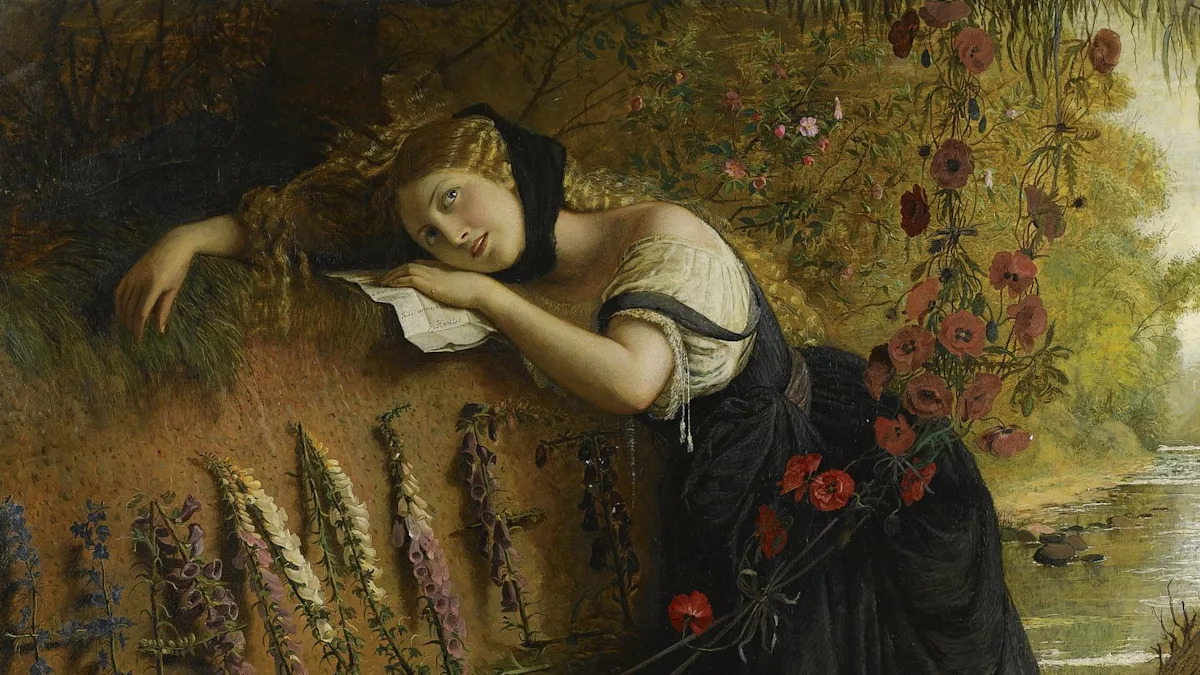Taylor Swift’s artistry often finds inspiration in classic literature, and her latest venture, "The Fate of Ophelia," from the upcoming album The Life of a Showgirl, strongly connects to Shakespeare’s haunting character. The song’s roots in Shakespeare’s Hamlet underscore the tragic essence of Ophelia, who is known for her descent into madness and eventual drowning, following the harrowing events surrounding her father’s death.
Swift confirmed on the New Heights podcast that her new song draws directly from Shakespeare’s Ophelia, whose tragic narrative has intrigued audiences for centuries. Despite the impending album release, details regarding the song’s lyrics and deeper themes remain under wraps, sparking speculation among fans and literary enthusiasts alike. As Swift prepares for the music video’s unveiling during the album’s launch event, the exploration of Ophelia’s character promises to blend the emotional weight of Shakespearean tragedy with Swift’s contemporary storytelling style.
However, the question of Ophelia’s origins—both fictional and real—invites deeper inquiry. Various theories have emerged regarding the inspiration behind Shakespeare’s character, particularly concerning the tragic matters of women’s lives in the Elizabethan era. Notably, a coroner’s report from 1569 sheds light on one potential real-life Ophelia: Jane Shaxspere, a two-and-a-half-year-old girl who drowned while picking marigolds near a stream in England. The striking resemblance of the last name to Shakespeare’s has prompted speculation about Jane being a relative—perhaps even a cousin.
Historian Steven Gunn, who discovered Jane’s report, remarked on the tantalizing possibility of a connection to the famous playwright and how the discoverable fragments of Shakespeare’s family history continue to spark curiosity. The historical context of drowning, particularly among women, adds a poignant layer to Ophelia’s character. Annually, drowning was a leading cause of death during Shakespeare’s life, as women often faced fatal accidents while performing domestic duties near water.
Additionally, the tale of Katharine Hamlet, who drowned in close proximity to Shakespeare’s hometown of Stratford-upon-Avon in 1579, provides another example of the tragic incidents that may have influenced the Bard’s depiction of Ophelia. At the time of Katharine’s death, Shakespeare was just a teenager, yet the commonality of drowning as a cause of death resonates with the thematic elements present in Hamlet.
Much has been articulated about the portrayal of Ophelia in the visual arts, with John Everett Millais’ 1851 painting serving as a significant cultural touchstone. Millais enlisted Elizabeth Siddal to model for the depiction of Ophelia floating in a river, an artistic endeavor that inadvertently exposed Siddal to grave danger. The oil lamps used to warm the water extinguished, leaving Siddal to model in near-freezing conditions, leading to pneumonia and subsequent opioid addiction. Siddal’s tragic life and eventual overdose reflect a parallel narrative intertwined with the themes of suffering and despair associated with Ophelia.
In examining the various inspirations behind Ophelia’s character, whether from direct familial connections or broader societal tragedies, it becomes clear that Swift’s new song exists within a rich literary and historical tapestry. While it’s yet to be revealed how Swift will interpret these elements in her lyrics, one can anticipate a dialogue between past and present canvas.
Taylor Swift has masterfully woven classic literature into her music before, turning iconic figures into relatable narratives that resonate with her audience. The interest in "The Fate of Ophelia" illustrates both the staying power of Shakespearean themes and Swift’s ability to translate them into contemporary language. Each retelling is a fusion of past sorrows and modern understanding, ensuring that Ophelia’s story—along with its tangled web of real and fictional inspirations—continues to captivate new generations of listeners.
As the anticipation builds for The Life of a Showgirl and "The Fate of Ophelia," it is crucial to recognize that this exploration does not solely exist in the realm of entertainment. By delving into historical contexts and literary origins, listeners and fans gain an appreciation for the complexities surrounding Ophelia’s character, encouraging an evocative cross-examination of women’s narratives throughout time.
Shakespeare’s Ophelia has inspired countless interpretations and adaptations across various forms of media. Swift’s forthcoming tribute is yet another layer added to this rich legacy, prompting discussions on how stories of tragedy can create connections across the ages. Regardless of how closely her song mirrors the myriad influences surrounding Ophelia, the essence of her struggles will undoubtedly resonate, reminding audiences of the timeless nature of despair interwoven into the human experience.
The legacy of Ophelia—whether drawn from a young cousin of Shakespeare or reflective of the broader societal struggles faced by women in the Elizabethan period—remains deeply embedded in our cultural consciousness. With Taylor Swift poised to potentially revive Ophelia’s story through the lens of modernity, fans and scholars alike await with bated breath, eager to uncover how this beloved literary figure can once again take the stage in a new light.










